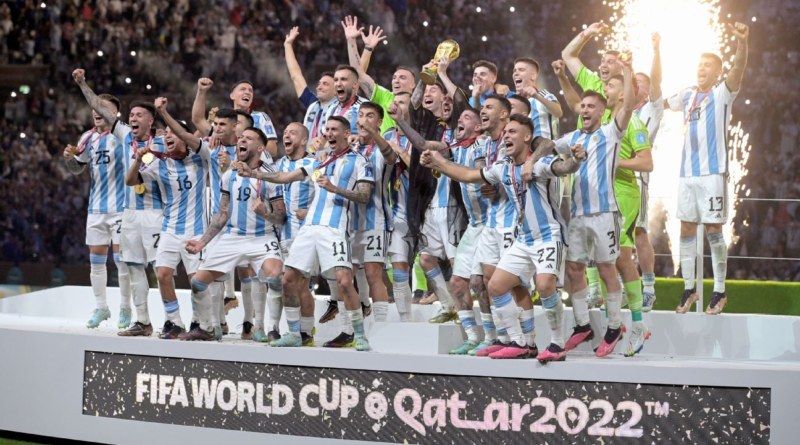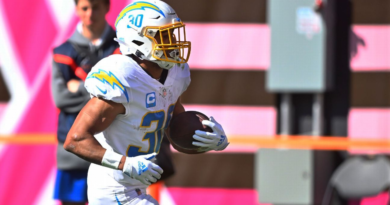Argentina's World Cup glory built in Europe as South American leagues lose importance
Argentina are World Cup champions and Europe`s stranglehold on the title has finally been broken! A triumph for South American football? Yes, but with restrictions, doubts and concerns.
Argentina’s fans managed to turn Qatar’s Lusail Stadium into a version of the Bombonera, the legendary stadium of Boca Juniors. The party in the stadium was so intense that it was hard to work out where the team finished and the players started. Everything blended into one joyous mass. The occasion could hardly have been more Argentine, more a celebration of the South American approach to the game.
But the players? Only one of them — reserve keeper Franco Armani — plays his club football in Argentina. This has become a familiar pattern. In the entire World Cup, just two South America-based players managed to find the net — Uruguay‘s Giorgian De Arrascaeta (Flamengo, Brazil) and Costa Rica defender Juan Pablo Vargas (Millonarios, Colombia). The 2018 World Cup also contained two scorers, down from five in 2014.
It is impossible to avoid an alarming conclusion — whoever came out on top in Qatar, the hard truth is that club football has become increasingly peripheral. The focus is taking place on the other side of the Atlantic.
0:33
Lionel Messi was given a guard of honour by his PSG teammates on his return to training after winning the World Cup with Argentina.
Lionel Messi‘s status in the Argentine pantheon is now assured, but it has not always been an easy ride. Messi signed for Barcelona at the age of 13. There was an inevitable distance between Messi and his compatriots, who saw him more as a Catalan than as one of their own. It’s a similar case for keeper and now-national hero Emiliano Martinez. A couple of years ago, though, he could have wandered down the busiest street in Buenos Aires with not the slightest prospect of being recognised. He joined Arsenal at the age of 18, and spent an entire decade learning his craft in the reserves or out on loan. It took Martinez a long, long time to break out at Aston Villa and then become an overnight Argentine sensation.
The duo of midfielder Enzo Fernandez and striker Julian Alvarez combined to good effect during the World Cup campaign. Neither was in the starting lineup when the tournament began; both forced their way in, and Argentina’s second goal against Poland and the opening strike against Croatia were the consequence of the understanding between the ex-River Plate teammates. Both have also made good starts to their debut European season, Fernandez with Benfica and Alvarez with Manchester City.
Talent that outstanding does not stay long in South America. European clubs want to sign players of promise as early as they can. Leave it too long and there is a fear that the player will not be able to adapt to the quicker, more intense style of play of the game at the highest level.
And North America is also getting in on the act. Young attacking midfielder Thiago Almada made just one brief appearance off the bench in the course of the World Cup. Even so, he made history. When the Atlanta United man took the field, it was the first time a Major League Soccer player had represented Argentina in a World Cup. And the rise of MLS as an importer of talent is a factor which has clearly weakened many of the South American leagues.
These trends are not limited to Argentina. The World Cup showed how much they apply to South American football in general. Take a look at the Brazil side. Key names like Marquinhos (Paris Saint-Germain) and Raphinha (Barcelona) barely played at home, building their careers abroad. Vinicius Junior is a brief memory, off to Real Madrid at the age of 18. Ederson (Manchester City), Bremer (Internazionale), Fabinho (Liverpool), Gabriel Martinelli (Arsenal) — all of these were strangers to the millions of Brazilian fans who only follow the domestic game.
With its tiny population, Uruguay has long been accustomed to losing their best talents at a very young age. The country’s focus on the under-20 side was designed with this in mind — to identify and build a long-term relationship with youngsters who will inevitably move abroad. And two of Uruguay’s squad are based in MLS — along with four of the group that Ecuador took to Qatar. Many of the other Ecuador players had only the briefest of contacts with first-team football at home before transferring abroad. Such is the case of Brighton’s Jeremy Sarmiento, born in Spain and a former England youth international before he opted to represent Ecuador, the land of his parents’ birth.
1:55
ESPN’s Fernando Palomo discusses the legacy Pele leaves behind as both a soccer player and a global ambassador.
The Sarmiento case is similar to many of the African players in the World Cup. The relatively strong African showing in Qatar (most notably Morocco reaching the semifinals) was clearly aided by the process over the last two decades whereby FIFA has made footballing nationality a more flexible affair. There were former youth internationals of France, Netherlands and Germany representing countries of their families’ heritage. It is certainly arguable that Africa’s progress had more to do with players among the European diaspora than with anything taking place in the domestic leagues.
And in the same way, although the soundtrack to the World Cup final and the emotional drive that carried the team to the title were 100% Argentine, there is no doubt that Europe played a part in the triumph by helping the development of many of the players.




